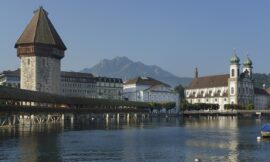Hue, situated in central Vietnam along the banks of the Perfume River, is a city steeped in history, cultural richness, and imperial grandeur. As the former capital of the Nguyen Dynasty, Hue stands as a testament to Vietnam’s imperial past, with its well-preserved monuments, ancient citadel, and vibrant traditions.
The heart of Hue is the UNESCO-listed Complex of Hue Monuments, a vast citadel that served as the imperial capital from 1802 to 1945. Enclosed by massive walls and a protective moat, the citadel is a complex of palaces, temples, gates, and gardens, offering a glimpse into the opulence and sophistication of Vietnam’s imperial era. The Imperial City within the citadel housed the emperor’s court and administrative offices, reflecting a harmonious blend of traditional Vietnamese and French colonial architectural styles.
At the center of the Imperial City is the Forbidden Purple City, a secluded area reserved for the emperor and his inner circle. Despite the damages inflicted during the Vietnam War, the Forbidden Purple City retains a sense of mystique and grandeur. The intricate designs of the gates, the Halls of Mandarins, and the remaining structures provide a captivating insight into the imperial court’s rituals and ceremonies.
The Perfume River, which flows through the heart of Hue, is an integral part of the city’s landscape and history. Cruising along the Perfume River offers a tranquil journey with scenic views of the ancient citadel, lush landscapes, and traditional villages. The riverbanks are dotted with pagodas, royal tombs, and historical sites, making it a picturesque route for exploring the cultural richness of Hue.
Hue is renowned for its royal tombs, scattered along the banks of the Perfume River and surrounding hills. Each tomb is a unique architectural masterpiece, reflecting the personality and preferences of the emperor for whom it was built. The Tomb of Khai Dinh, with its fusion of Eastern and Western architectural styles, showcases a departure from traditional Vietnamese tomb design. On the other hand, the Tomb of Tu Duc, surrounded by serene gardens and reflecting pools, exudes a more tranquil and classical atmosphere.
The city’s cultural vibrancy is further exemplified by its traditional festivals, with the Perfume Festival being a highlight. Celebrated annually, the Perfume Festival honors the local deities and pays homage to the legends associated with the Perfume River. Pilgrims and locals partake in colorful processions, boat races, and vibrant performances, creating a festive atmosphere that captures the spirit of Hue.
Hue’s culinary scene is a delectable exploration of central Vietnamese cuisine. The city is famous for its distinctive dishes, including bun bo Hue (Hue-style beef noodle soup), com hen (clam rice), and banh khoai (Hue-style savory pancakes). Exploring the local markets and street food stalls provides a sensory journey through the flavors and culinary traditions unique to the region.
The city’s modern developments, including accommodations, museums, and cultural centers, complement its historical legacy. The Hue Museum of Royal Fine Arts and the Hue Royal Antiquities Museum showcase artifacts, art, and historical documents related to the imperial dynasties. These institutions contribute to the preservation and dissemination of Hue’s cultural heritage.
In conclusion, Hue stands as a living testament to Vietnam’s imperial history and cultural resilience. The imperial citadel, royal tombs, and cultural festivals collectively paint a vivid portrait of a city that has played a pivotal role in shaping Vietnam’s past. As visitors traverse the ancient citadel, cruise along the Perfume River, and savor the culinary delights unique to Hue, they partake in an immersive journey that transcends time, delving into the soul of a city that encapsulates the essence of Vietnam’s cultural identity.



